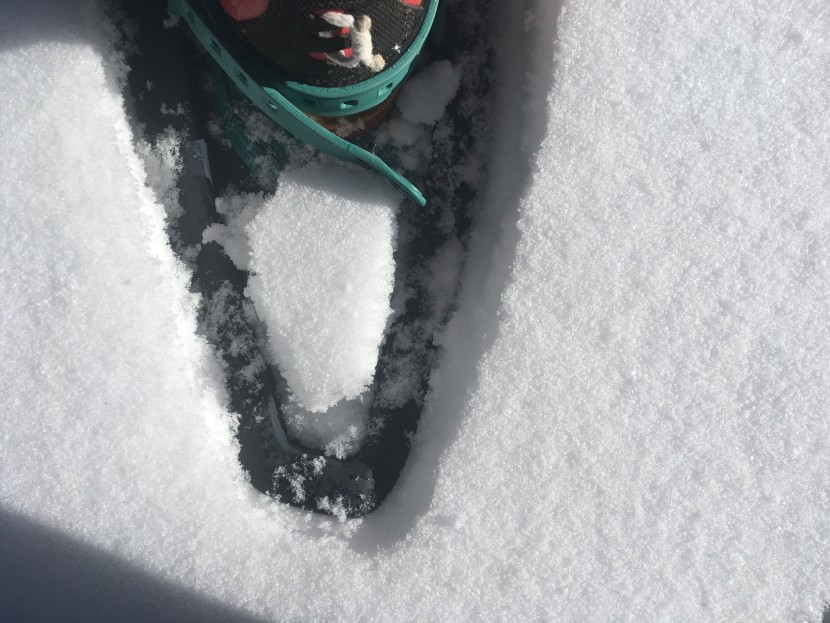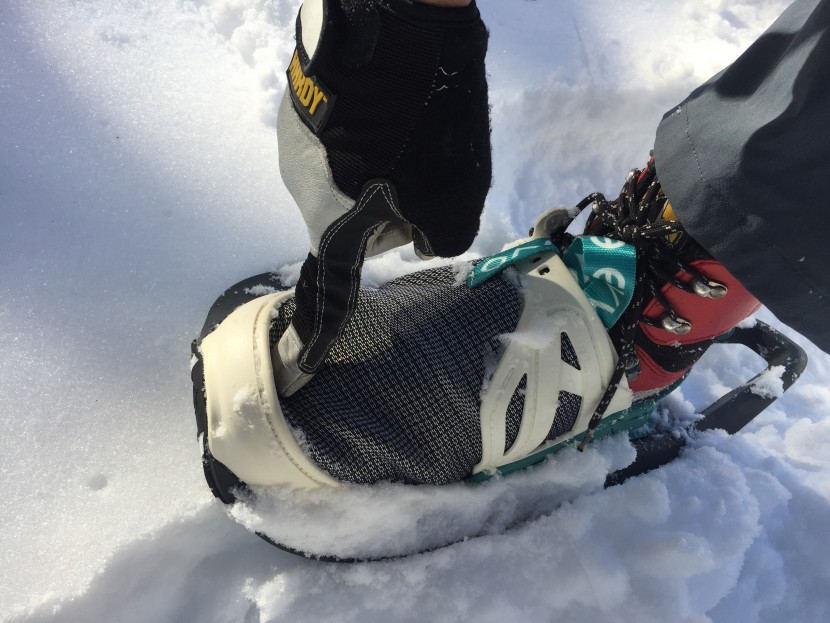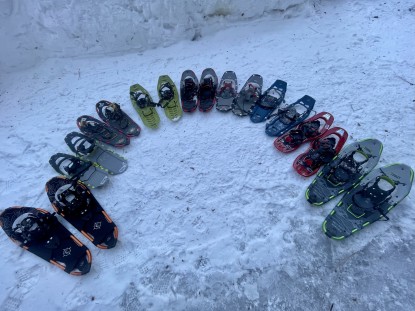EVVO Snowshoes Review
Our Verdict
Our Analysis and Test Results
The EVVO Snowshoe is relatively new to the market, and its design brings some new and interesting ideas. The bottom of the deck, the binding, and the way those two are attached are unique in our test. Read on to find out how these new designs performed in our real-world testing.
Flotation
Flotation is mostly a function of the surface area presented by the deck of a snowshoe. Even though we tested the largest model available, the EVVO has the lowest surface area numbers in our review, just 127 square inches. This means that it is noticeably weak in the flotation department.
In addition, the deck of this snowshoe is quite flexible. While this makes it more comfortable to walk in on hard snow or groomed trails, it concentrates your weight under the foot, and the flotation is less than with a similarly sized rigid deck.
Traction
Traction is necessary for traveling across snowy landscapes. The EVVO approaches the traction problem differently from any other snowshoe we've seen. It eschews metal spikes, rails, or any sort of hard plastic fin. Instead, what's found on the bottom of the deck is rubber that looks like a car's tire. Our team was skeptical at first that this would work at all.
In the end, we discovered that skepticism to be well-founded. Though the difference varied in every type of snow (or snow and ice combination) we tested, the EVVO had less traction than any other snowshoe in our review.
Stride Ergonomics
The way the binding of a snowshoe attaches to the deck is generally the most important factor in this metric. Unlike every other product in this review, the binding of the EVVO is fixed directly to the deck. The deck does not rotate around a hiker's foot in any way. Instead, it is very flexible.
We found that this is one of the more pleasant snowshoes to walk in on very hard snow or groomed trails. This is due both to the flexible deck (especially the tail) and the generally smaller size. In deeper snow, it was as comfortable to walk in as any other model, though in these conditions we were more distracted by the lack of flotation.
Another factor that affects how it feels to walk around with something on your feet is how much it weighs. While no snowshoe is ultralight, the EVVO is among the heaviest products in our test, and this has a negative impact on its stride ergonomics.
Binding Comfort
The unique binding of the EVVO has a slipper-like front that your boot slides into. Two rubber straps — one over the instep and one behind the heel — secure your boot. We found that this setup distributed binding pressure fairly well.
Ease Of Use
Putting on these snowshoes is a pretty intuitive process. A small tab (that's hard to use with mittens) holds the slipper part open while you insert a foot. The rubber strap with a pin-in-hole design is similar to many other models. With the EVVO, however, we found those straps to be a bit on the short side and harder to hold on to than other models.
Binding Security
The poor traction and flotation performance of the EVVO means we cannot recommend them for deep snow or steep, rough terrain, though the bindings are secure enough. These snowshoes seem to be sized by the user's foot size — as opposed to the user's weight, like most other models. We tested a size L. Despite a lack of adjustability on the “slipper” part of this binding, our smaller-footed testers did not experience noticeable slippage, despite the empty space.
Value
The EVVO is not a great value. Several other models in our test cost less (some significantly so) and yet perform much better. Snowshoes that are comparable or more expensive also perform better.
Conclusion
While the EVVO has some unique features and performance characteristics, we did not find these to be superior to standard snowshoe features and design. Even in its best metrics (Binding Comfort and Security), the EVVO is about average. Overall, it does not perform as well as other snowshoes.













